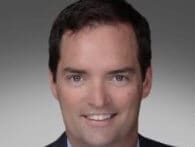If you need further evidence of just how many creditworthy borrowers were shut out of the mortgage market following the implementation of the Consumer Financial Protection Bureau’s (CFPB) ability-to-repay/qualified mortgage (ATR/QM) rule that took effect in January 2014, then take a look at the success that non-qualified mortgage/non-agency lender Angel Oak Mortgage Solutions is having lately. Along with its affiliate lenders, Angel Oak Home Loans and Angel Oak Prime Bridge, the companies have originated and securitized more than 5,000 non-QM/non-agency loans since 2015, practically all of which are currently performing.
And with lenders seeking more options to gain market share amidst declining volume, the non-QM market is poised for explosive growth in 2018. During the Mortgage Bankers Association’s (MBA) Annual Convention & Expo in October, MBA officials made a bold prediction that non-QM lending would double in 2018. That’s in part because investor appetite for these loans is growing. For evidence of that, look no further than the rapidly increasing number of non-QM securitizations: Angel Oak Capital, partner company to Angel Oak Mortgage Solutions, last month announced its fifth securitization – a $210.18 million portfolio that was mostly composed of non-QM loans. That deal, its third for this year, brought Angel Oak Capital’s total 2017 issuance to approximately $550 million.
What’s more, it was the company’s third non-QM transaction to be rated. The senior tranche of AOMT 2017-3 was oversubscribed and received AAA ratings from both Fitch and DBRS, similar to its two previous securitizations in 2017.
No doubt, growth in the non-QM market is accelerating: As of the end of November, the Angel Oak companies were on track to originatie more than $1 billion in non-QM loans for the year.
To learn more about what is driving growth in the non-QM lending market and why originations in the segment are forecast to double in 2018, MortgageOrb recently interviewed Tom Hutchens, senior vice president of sales and marketing for Angel Oak Mortgage Solutions. What follows are excerpts from our interview.
Q: Tell us more about Angel Oak Mortgage Solutions and, more importantly, why the company decided to focus on the non-QM lending segment.
Hutchens: [Angel Oak Mortgage Solutions is] wholesale and correspondent – we are not retail at all – and we are 100% non-agency. And I say that because non-QM is a little tighter than what we actually do – some of our loans actually fall into QM status, but we’re not doing any Fannie Mae or Federal Housing Administration – no government loans. Because of that, we have our hands on the pulse of what’s going on in the non-agency/non-QM space.
And 2017 has been a turning point, in a lot of respects. The first few years we were doing this, it was an education mission – teaching people that, “Hey, whatever your preconceived notions are about non-QM and non-prime, they might not be right.” So, we have been teaching originators and lenders across this country, “This is what today’s non-QM looks like.”
At the same time, we have been originating a lot of loans. It’s coming up on five years, and our loans have gone into five securitizations. Angel Oak Capital, our affiliate, takes our loans and puts them into securities. And the last three have been rated; they received AAA ratings. So, this is much different than pre-crisis. It is all above-board. Everybody knows what these loans are – and the ratings agencies, they know our guidelines.
It has brought liquidity to the market. We have bridged the gap between originations and investors in a non-agency format. Prior to us, and maybe a couple of others, there was no other way to bridge that gap, other than agency loans.
Q: So has it been a big job to boost lender and investor confidence to the point where this non-QM market could really take off?
Hutchens: Yes – the goal is to boost everybody’s confidence. No originator wants to be involved in loans that aren’t going to be good and healthy for the market. So, we have had to boost confidence at the investor level, the lender level, the rating agency level – everyone along the way.
And once they see it, they get it. They say, “Yes there is a need for this,” and they see that what we are doing is responsible non-QM lending. We have zero interest in giving a loan to a borrower that they cannot repay. There is no way to win that scenario – and we proved that in 2008-2009.
Q: What about the long curve of loan performance? In other words, will everyone get even more comfortable with non-QM loans as they see good performance of your loans over time?
Hutchens: We have had such phenomenal performance – it’s much better than any of us would have anticipated or forecast. At first, of course, we thought, “Hey, we’re doing some non-prime loans, we’re going to get some defaults.” But we’re not getting any defaults. We’ve done 5,000-plus originations, and we can count our defaults on one hand. It’s too good, actually.
Now, we’ve been in a very positive economic cycle – despite the problems with the housing market. No doubt, it’s difficult to originate loans. The market is still clunky, due to regulations. But in general, everything has been positive.
So, we’re doing good loans, and that’s what has fueled everyone’s interest in this. Now that we have done these securitizations and they’re rated, big investors, big insurance companies [are] buying these securities. The performance of the underlying loans is now public knowledge. So, everyone is now getting it – the whole channel, from originators to investors.
One big thing that has occurred in the past 12 months is that the warehouse lenders, who control the originators’ lines of credit, have really come around. And that’s partly because we’ve been educating them and showing them what these loans are made of.
We think 2018 really is going to be the year when volume of non-QM loans starts to catapult. There’s been a lot of lenders that have dabbled in it – they’ve done some non-QM lending – but they have not really focused on it. But today, lenders are struggling to find new ways to get the right borrowers into homes – and, frankly, the agencies are only going to do so much. They’re not meant to do alternative, outside-the-box loans – that’s not what they are built for. And they shouldn’t be [doing that], because they’re backed by the government. The non-QM market is really one that private capital should be taking care of.
Q: Jumbo has always played a major role in the non-QM market. Are there any specific new loan products that are now driving this market?
Hutchens: There are some big categories. Like you said, there’s the prime jumbo. That’s A-plus borrowers, just like a conventional loan, only with higher loan amounts. And a lot of the time, the credit requirements are even tighter than agency loans. But that is a very hit-or-miss market because of the investor appetite – it comes and goes. So, it’s really hard for originators to originate that volume [in the jumbo market], because investor appetite varies from month to month. On top of that, there’s also some volatility in the luxury housing market. So for Angel Oak, our mission, in that space, is to bring some stability to it. To be honest, we’re just getting started in that space.
As far as jumbo goes, we play more in the “just missed” space. These are people who have had a “credit event” – let’s say, four years ago – but they are shut out of the market because jumbo guidelines generally require seven years of clean credit. They could be people who made some strategic decisions – for example, being upside down on a property – or other things that do not necessarily make them a bad borrower or a bad credit risk, at this point.
That continues to be a big part of our business – non-prime borrowers who have had some sort of a life event – a credit event – and they just no longer fall into the agency box. I would say they currently represent about 35% to 40% of our business.
As far as new products go, we’ve seen tremendous growth in what is commonly known as the bank statement product – we call it alternative verification of income. Fannie Mae, FHA, they require that if you are self-employed, you have to qualify based on two years of tax returns. We believe that tax returns serve a purpose – but tax returns only show your IRS liability. They don’t necessarily show your ability to repay a mortgage. So, that’s why we have created this bank statement program that analyzes a borrower’s personal cash flow and/or business cash flow, to determine their ability to repay. And as you know, the “bank statement product” is a fast-growing segment in the mortgage market.
From an innovation standpoint, we have also come up with some other things – for example, we have a product that a borrower can qualify for one day out of a foreclosure. We [will offer such loans] if it makes sense – depending on the circumstances of the foreclosure and the borrower’s ability to repay.
For example, if the bank foreclosed on a $200,000 mortgage, and that borrower comes to us for a $400,000 mortgage the next day, that doesn’t make sense. Now reverse that: They had a $400,000 mortgage, and some life event occurred that made it so they could no longer afford that mortgage, and they’re coming to us for a $200,000 mortgage, which they can repay. However, they no longer qualify under the agency guidelines. Now, that might not make sense in every scenario, but it is more logical. And we’re going to have a much better chance of getting to a “Yes” in that scenario.
Basically, we’re doing the loans that make sense – that have solid guidelines built around them – and that’s how we are [growing the non-QM market].
Q: So, if non-QM is set to pop in 2018, does that mean we can expect to see a bunch of new lenders entering the non-QM realm?
Hutchens: To be honest, I think the nature of the product – and the programs themselves – is going to keep a lot of lenders out of the non-QM market. And the reason why is agency lending is very automated. Think of DU. It makes the credit decision on every single Fannie Mae loan. Underwriters in the agency world don’t make credit decisions. So, if you have a business where you are doing a lot of that and then you suddenly you want to get an underwriter to look at someone’s application, credit report and letters of explanation, and have the underwriter make a decision, that’s kind of tricky, because the underwriter is not used to that. They’re used to the machine spitting out a “Yes” or “No” – and they just verify the documentation and do whatever other things the machine tells them to do. So, that’s a limitation.
But for us, this is all we do exclusively. Our underwriters do non-agency loans all day. So, we’re used to manual underwriting, and we’re very good at making credit decisions.
Q: What about the role of technology in non-QM origination and securitization? Considering the need for manual underwriting, are there any opportunities to achieve operational efficiencies? How do you hold down origination costs?
Hutchens: We’re always looking at ways to streamline all of our processes. But at the end of the day, all of our loans require a manual underwrite. And I do not see that changing in the near future. This just simply is not a market that can have a DU equivalent. And that’s because a lot of the loans that we make today might fall outside of our own guidelines in the future. That doesn’t mean they’re not good loans – it just means that the definition of “non-QM” might be different years from now from what it is today.
I do feel that [the high cost of doing 100% manual underwriting] for non-QM loans could be enough to keep some lenders out of the market. But that’s where Angel Oak comes in; lenders looking to do non-QM, including the big lenders, could use our expertise to supplement the process. They could utilize our underwriters. In fact, that’s what we have a correspondent channel for.
Q: Do you see automated verification and, in particular, the use of alternative sources of credit as being the key to making the non-QM market grow?
Hutchens: I think the real key is awareness and education. And that’s an ongoing effort. I don’t think it is ever going to be any one particular product or program – I think the key is just having everyone understand what this non-QM market is.
Q: Beyond the introduction of new loan products, what do you think will really drive the non-QM market in 2018?
Hutchens: Participation. And education is going to fuel the participation rate.
Also, with origination volume going down, lenders are going to need more options if they are going to grow their market share. If they do nothing but continue to originate agency loans, they can be pretty sure that their business is going to shrink. So, they have to look to these alternative sources.











I’m confused, Angel Oak does or doesn’t do retail? The first paragraph states the retail was part of their company and Tom H. SVP says they have no retail? Then what is Angel Oak Home Loans? I called and they said they were the direct lending arm of Angel Oak Mortgage Services.
Curious
Hi Wild Bill,
You are correct, Angel Oak Home Loans does do retail direct – the article has been updated to reflect that Tom was only referring to Angel Oak Mortgage Solutions in that particular response. Angel Oak Home Loans, however, does do some non-QM lending as well…